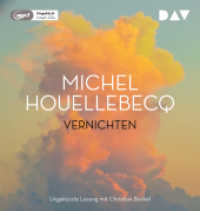- ホーム
- > 洋書
- > ドイツ書
- > Mathematics, Sciences & Technology
- > Earth Science
- > geography
Full Description
Archaeology has been historically reluctant to embrace the subject of agent-based simulation, since it was seen as being used to "re-enact" and "visualize" possible scenarios for a wider (generally non-scientific) audience, based on scarce and fuzzy data. Furthermore, modeling "in exact terms" and programming as a means for producing agent-based simulations were simply beyond the field of the social sciences.
This situation has changed quite drastically with the advent of the internet age: Data, it seems, is now ubiquitous. Researchers have switched from simply collecting data to filtering, selecting and deriving insights in a cybernetic manner. Agent-based simulation is one of the tools used to glean information from highly complex excavation sites according to formalized models, capturing essential properties in a highly abstract and yet spatial manner. As such, the goal of this book is to present an overview of techniques used and work conducted in that field, drawing on the experience of practitioners.
Contents
Introduction.- Explaining the past with ABM: on modeling philosophy.- Modeling archaeology: origins of the artificial Anasazi Project and beyond.- Agent-based simulation in archaeology: a characterization.- Reproducibility.- Geosimulation: modeling spatial processes.- Large simulations and small societies: high performance computing for archaeological simulations.- Mining with agents: modeling prehistoric mining and prehistoric economy.- Modeling settlement rank-size fluctuations.- Understanding the iron age economy: sustainability of agricultural practices under stable population growth.- Simulating Patagonian territoriality in prehistory: space, frontiers and networks among hunter-gatherers.- How did sugarscape become a whole society model?.








